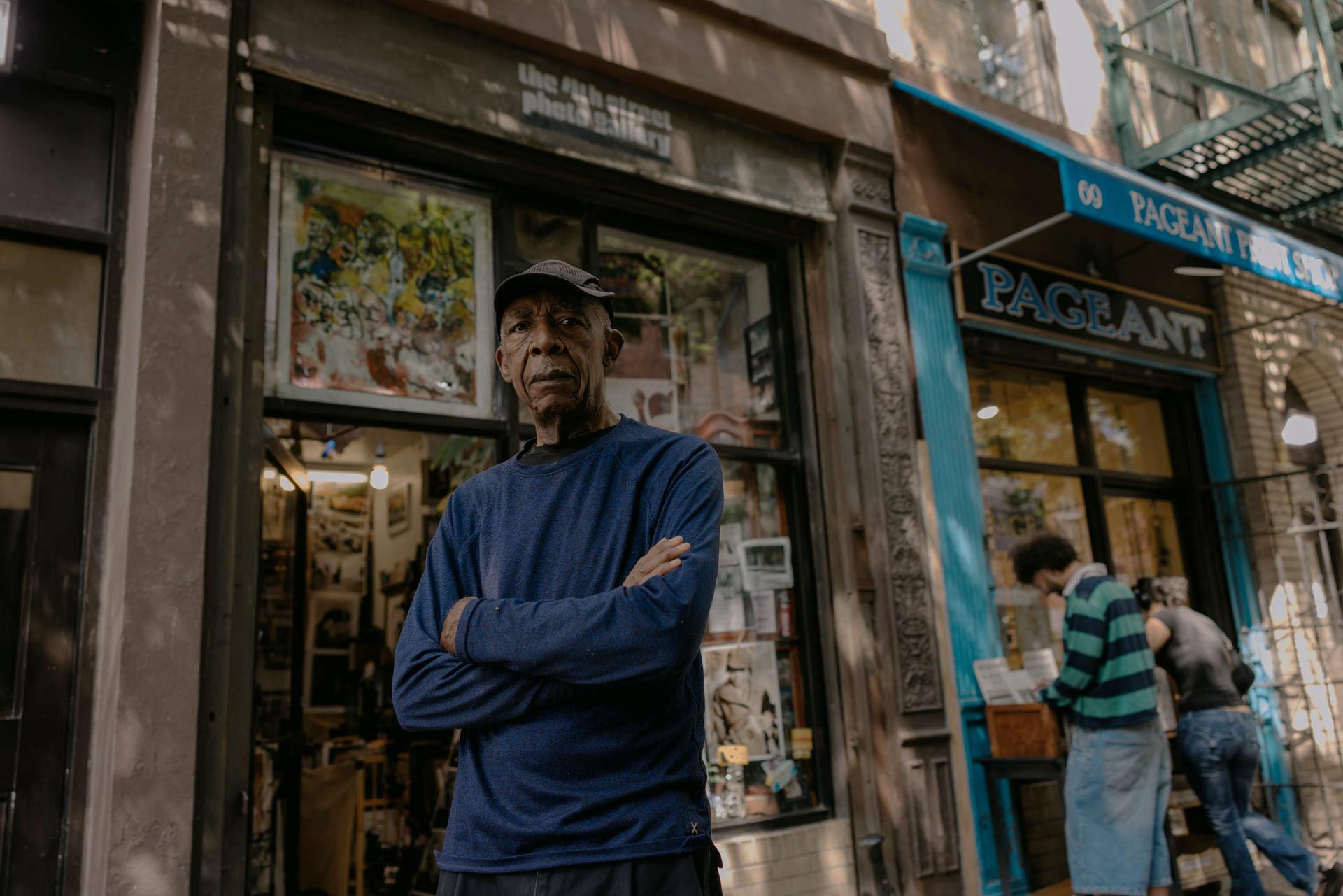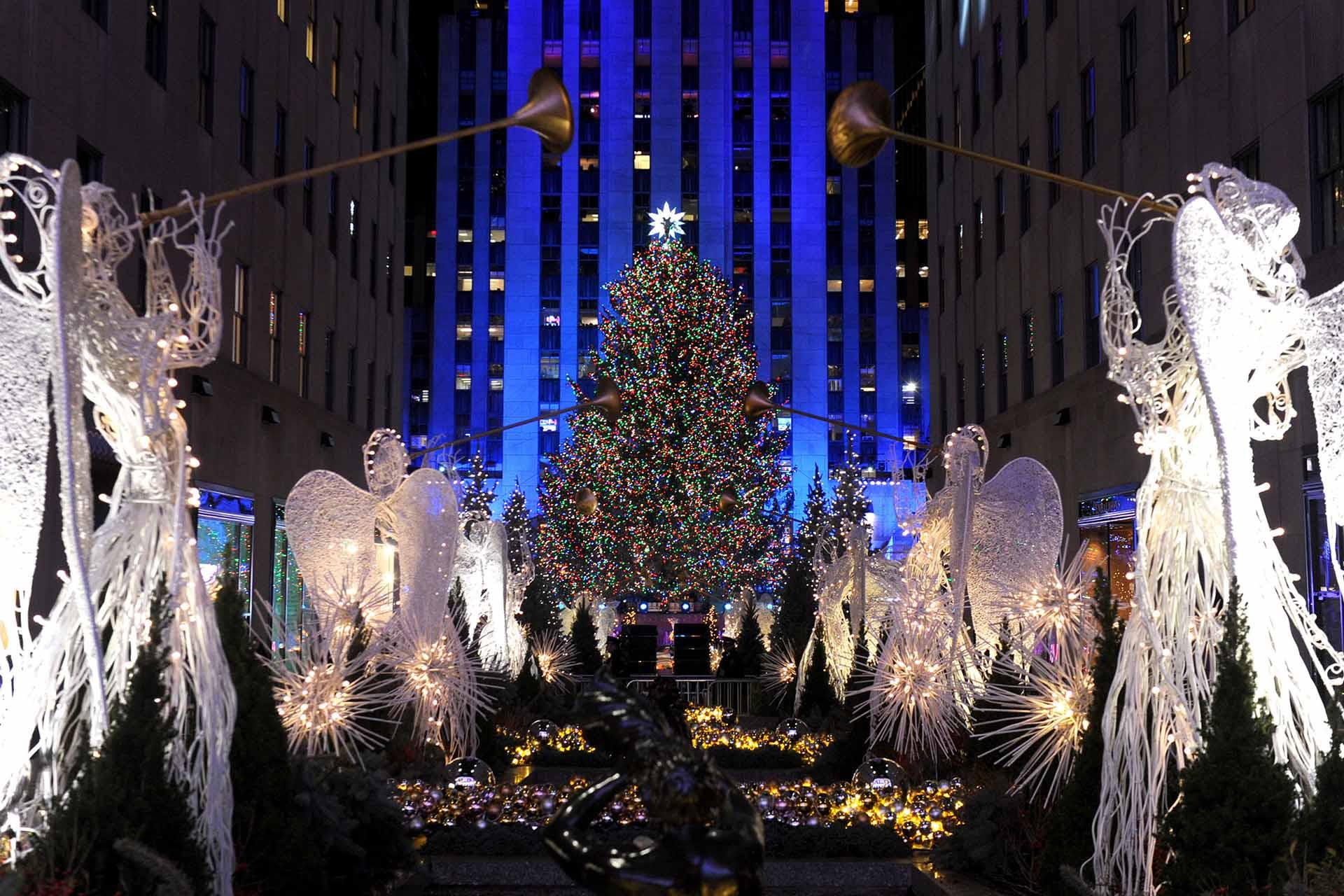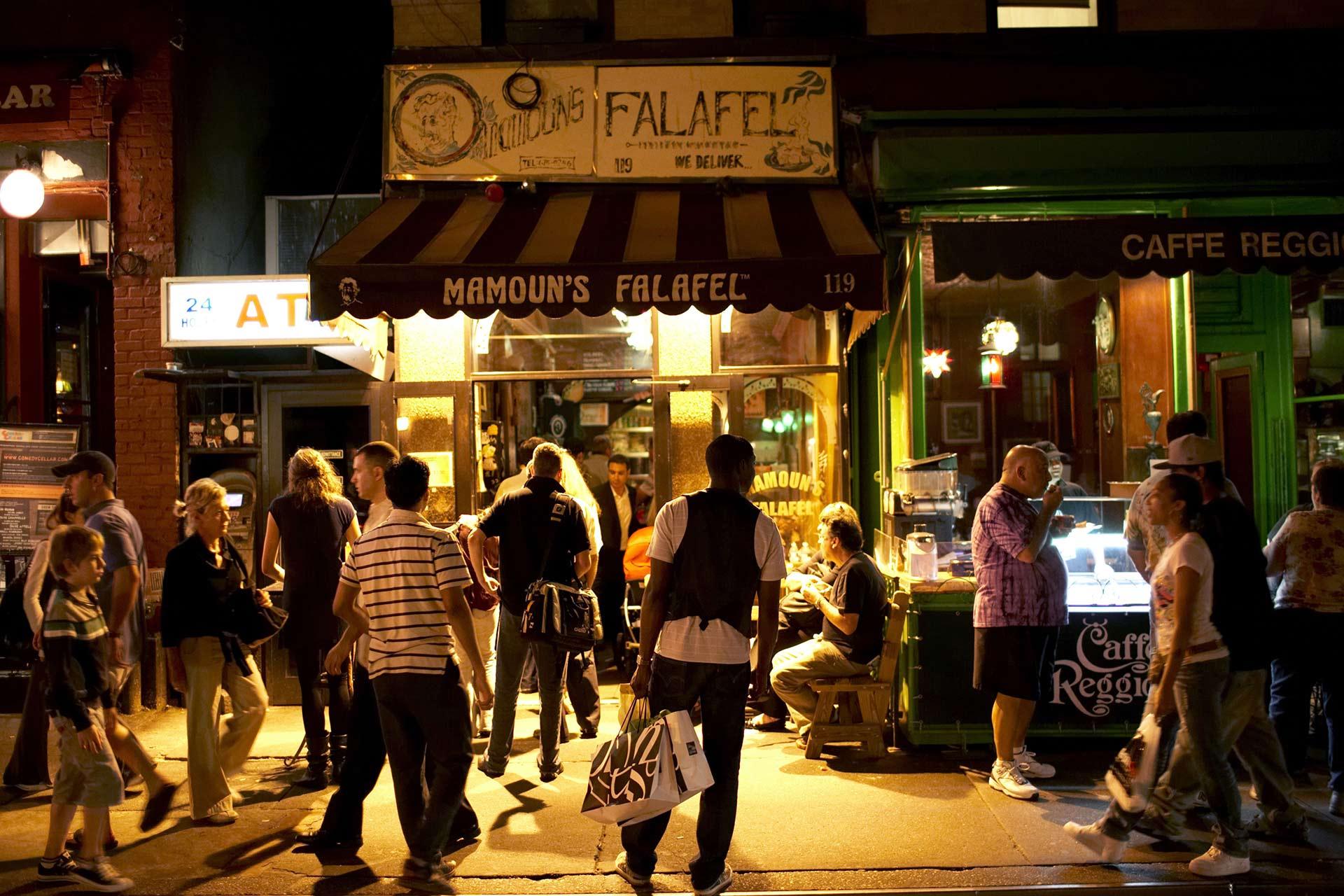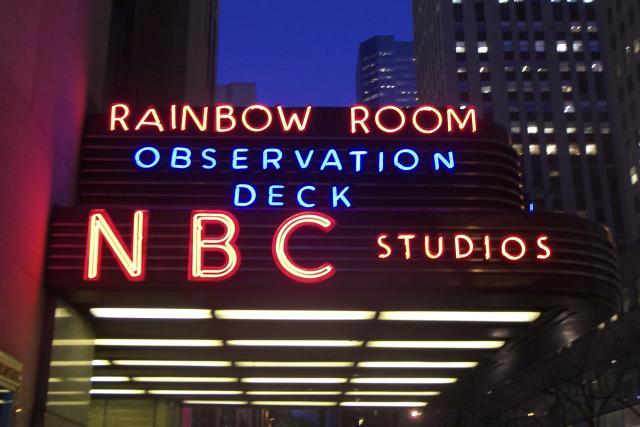Today, Pride is often associated with parades, performances and parties, but it started after a period of unrest and protest following a police raid of the Stonewall Inn in Greenwich Village in June 1969. Known as the Stonewall Riots, or Stonewall Uprising, this act of resistance marked a historic turning point that propelled the LGBTQ+ rights movement in New York City, the United States and globally.
One year later, the first of the marches that would ultimately become known as Pride was held in the City, establishing the last weekend in June for an annual demonstration. It was organized by the Christopher Street Liberation Day Committee, which continued to lead the event until 1984, when Heritage of Pride took over. Throughout Pride’s history, the fight for equality, justice and visibility has stood at the center of its mission.
Read on for an overview of historic NYC Pride moments and related landmark events.

Stonewall Inn, 1969. Photo: Diana Davies. Courtesy, New York Public Library
1969: Stonewall Ushers in the Modern LGBTQ+ Rights Movement
Starting on June 28, 1969, after police raided the Stonewall Inn on Christopher Street in Greenwich Village, LGBTQ+ patrons and locals who were fed up with being persecuted fought back. Their resistance made headlines, ushering in the modern LGBTQ+ rights movement in the United States and leading to increased activism, the fight for equality and the celebration of the LGBTQ+ community.

Christopher Street Liberation Day, 1970. Photo: Diana Davies. Courtesy, New York Public Library
1970: NYC Pride Begins as Christopher Street Liberation Day
On June 28, 1970, the first march in NYC in honor of Stonewall took place. Then known as Christopher Street Liberation Day, it established the last weekend in June for an annual demonstration and gave rise to today’s Pride March in NYC.

"Fighting for Our lives" and "NY AIDS Network" banners during a gay rights march dedicated to the victims of AIDS, New York City, 1983. Photo: John T. Bledsoe. Courtesy, Library of Congress.
1983: Pride Marches for AIDS Patients
The 14th annual Pride was dedicated to people everywhere with HIV/AIDS. Participants marched from Central Park West to Washington Square with banners reading “Fighting for Our Lives” and “NY AIDS Network.” The event raised awareness of the widely feared disease, mobilized activists and supporters, and represented the community’s determination to overcome the AIDS crisis.

ACT UP March during pride parade in New York City. Photo: T.L. Litt Photography
1987: ACT UP Forms to End the AIDS Epidemic
In 1987, the AIDS Coalition to Unleash Power, better known as ACT UP, formed in NYC, eventually growing into an international organization that supports people living with HIV/AIDS and raises awareness about AIDS. The grassroots group staged bold political protests and demonstrations to demand more affordable, equitable access to HIV/AIDS treatments and called on governments and the pharmaceutical industry to take the epidemic seriously and develop new treatments.

Dyke March. Photo: Jeanette Spicer
1993: The Dyke March Takes to the Streets of NYC
The New York Lesbian Avengers, a grassroots organization fighting for lesbian rights and protection, organized the first Dyke March in Washington, DC, in April 1993. After a successful turnout there, NYC hosted its own version in June of that year and continues to do so each year. The event runs south on Fifth Avenue from Bryant Park to Washington Square Park on the day before the City’s Pride March. It is a protest for equality and visibility—both in and out of the LGBTQ+ community.

Bronx Pride. Photo: Brittany Petronella
1993–2005: NYC’s Boroughs Start Their Own Pride Celebrations
In the 1990s, Pride took off in the boroughs, which instituted celebrations of their own LGBTQ+ communities. In 1993, the Queens Pride Parade and Multicultural Festival began; it is generally thought of as the City’s first major Pride event outside of Manhattan. It was formed after the murder of Julio Rivera, a gay man who died after being attacked in Jackson Heights, as well as the controversy surrounding a school curriculum that included gay and lesbian content as part of lessons in tolerance. The parade was held in Jackson Heights, where it continues today. In 1997, Brooklyn held its first Pride march in Park Slope; in 1998, the Bronx organized the first Bronx Pride Parade and Multicultural Festival on the Grand Concourse; and in 2005, Staten Island joined in with its inaugural Pride parade—all of those take place each year as well.

Harlem Pride. Photo: Robert Andy Coombs
2010: Harlem Organizes Its First Pride Event
Since debuting in 2010, Harlem Pride has grown into an event that unifies the neighborhood’s LGBTQ+ community. It now features entertainment acts, celebrity hosts, kids’ activities, food vendors, and health, legal and financial services referrals.

Same-Sex Marriage Legalization. Photo: Alexander Thompson
2011: New York State Legalizes Same-Sex Marriage
After lawmakers failed to pass the bill only two years prior, New York Governor Andrew Cuomo signed the Marriage Equality Act into law on June 24, 2011. Pride festivities in the City recognized this milestone, which made same-sex marriage legal in the state of New York and grants same-sex couples the same rights as opposite-sex couples, including financial and legal benefits. Thousands of New Yorkers spontaneously took to the streets in celebration, while Cuomo, Mayor Mike Bloomberg and other politicians linked arms as they marched during the Pride Parade.

Pride March, 2013. Photo: Alexander Thompson
2013 & 2015: The Federal Government and Supreme Court Recognize Same-Sex Marriage
Under Section 3 of the Defense of Marriage Act, the US federal government did not recognize same-sex marriages. This resulted in the denial of benefits, including Social Security survivor’s benefits, estate tax exemptions and immigration eligibility, to name a few. On June 26, 2013, in United States v. Windsor, the US Supreme Court ruled that Section 3 was unconstitutional. The decision required the federal government to offer the same federal benefits to same-sex couples as opposite-sex couples in states where they were legally married. Windsor herself acted as a grand marshal for the 44th annual parade, held only four days later.
Another two years on—and two days before the NYC Pride March—the US Supreme Court ruled in Obergefell v. Hodges that all states had to recognize same-sex unions, leading to a celebratory feel in the City’s 2015 parade.

WorldPride Marching Contingent of NYC Tourism (then NYC & Company). Photo: Evelyn Hoffman
2019: NYC Hosts WorldPride
Fifty years after Stonewall, NYC hosted WorldPride in what was billed as the largest LGBTQ+ event ever held: the final weekend attracted around 5 million attendees in Manhattan alone. The march’s grand marshals included Pose cast members Dominique Jackson, MJ Rodriguez and Indya Moore; music icons such as Madonna, Grace Jones, Cyndi Lauper, Chaka Khan and Ciara performed as part of the festivities.

Queer Liberation March. Photo: Lia Clay Miller
2019: Queer Liberation March Forms
The Queer Liberation March, organized by the Reclaim Pride Coalition, was born in 2019 as an alternative to the main Pride March. The demonstration takes place on the same day as the Pride March and has fought for the freedoms of trans people and other marginalized communities, reproductive rights and much more—all while emphasizing activism and resistance and rejecting corporate and police involvement.

Brooklyn Liberation, 2021. Photo: Yael Malka
2020–2021: Brooklyn Liberation Fights for Black Trans Lives
In 2020, a grassroots collective for queer and trans people of color formed under the name Brooklyn Liberation. An estimated 15,000 people rallied outside of the Brooklyn Museum. In 2021, the group gathered again, declaring a state of emergency in response to attacks against trans youth and anti-trans legislation. The marches received considerable coverage, effectively bringing Black trans youth into the spotlight while highlighting the inequalities that trans people continue to face despite progress for lesbian, gay, bisexual and queer people.
Check out our LGBTQ+ page for more inspiring stories, photo essays and guides showing how NYC continues to make LGBTQ+ history today.






